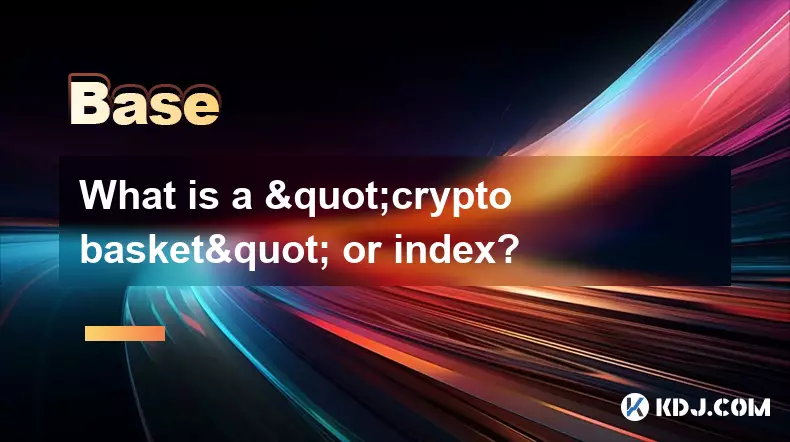-
 Bitcoin
Bitcoin $111000
1.68% -
 Ethereum
Ethereum $4289
-0.42% -
 XRP
XRP $2.830
2.60% -
 Tether USDt
Tether USDt $1.000
-0.01% -
 BNB
BNB $849.8
0.18% -
 Solana
Solana $208.0
4.92% -
 USDC
USDC $0.9999
0.00% -
 Dogecoin
Dogecoin $0.2130
1.23% -
 TRON
TRON $0.3371
0.04% -
 Cardano
Cardano $0.8289
3.22% -
 Chainlink
Chainlink $23.25
3.34% -
 Hyperliquid
Hyperliquid $44.68
3.12% -
 Ethena USDe
Ethena USDe $1.001
0.01% -
 Sui
Sui $3.318
2.93% -
 Bitcoin Cash
Bitcoin Cash $580.2
6.25% -
 Stellar
Stellar $0.3633
2.30% -
 Avalanche
Avalanche $24.40
5.43% -
 Hedera
Hedera $0.2200
3.20% -
 Cronos
Cronos $0.2739
3.94% -
 UNUS SED LEO
UNUS SED LEO $9.551
0.01% -
 Litecoin
Litecoin $111.0
1.76% -
 Toncoin
Toncoin $3.160
1.58% -
 Shiba Inu
Shiba Inu $0.00001235
2.28% -
 Polkadot
Polkadot $3.800
2.85% -
 Uniswap
Uniswap $9.501
1.73% -
 Bitget Token
Bitget Token $5.165
10.67% -
 World Liberty Financial
World Liberty Financial $0.2236
-9.69% -
 Dai
Dai $0.9998
-0.01% -
 Monero
Monero $267.2
2.64% -
 Aave
Aave $313.6
2.60%
What are "impermanent loss" calculators?
Impermanent loss occurs when price changes in a liquidity pool create a value gap compared to holding assets, but tools like IL calculators help users preview this risk.
Sep 03, 2025 at 12:00 pm

Understanding Impermanent Loss in Decentralized Finance
1. Impermanent loss is a phenomenon that affects liquidity providers in decentralized exchanges that use automated market maker (AMM) models. When users deposit two tokens into a liquidity pool, the value ratio between those tokens can shift due to market price changes. This shift results in an opportunity cost compared to simply holding the assets outside the pool.
2. The term 'impermanent' is used because the loss only becomes realized if the liquidity provider withdraws their funds while the price ratio remains altered. If prices return to the original ratio, the loss disappears. However, in volatile markets, this return is not guaranteed.
3. Impermanent loss calculators are tools designed to quantify this potential loss before a user commits funds to a liquidity pool. These calculators simulate how price movements between paired assets affect the value of a liquidity provider’s share relative to holding.
4. By inputting initial deposit amounts and expected price changes, users can visualize the impact of volatility. These tools often display results in percentage terms, showing how much value is lost under different market scenarios.
5. Most calculators assume ideal market conditions without fees, slippage, or external arbitrage. While simplified, they offer a foundational understanding of risk exposure in AMM-based protocols like Uniswap, SushiSwap, or Curve.
How Do These Calculators Work?
1. At their core, impermanent loss calculators rely on mathematical models derived from the constant product formula: x * y = k. This equation governs how asset balances in a pool adjust as trades occur.
2. When the external market price of one token rises or falls, arbitrageurs adjust the pool’s reserves to reflect that change. The calculator uses this mechanism to compute the new distribution of assets within the pool.
3. It then compares the total value of the liquidity position post-price-change with the value of holding the same assets in a personal wallet. The difference represents the impermanent loss.
4. Some advanced versions incorporate trading fees earned by liquidity providers, offering a net gain or loss figure. This addition provides a more realistic picture, as fee income can offset part or all of the impermanent loss.
5. Interactive sliders and real-time graphs are common features, allowing users to explore various price deviation scenarios and assess risk dynamically. These interfaces make complex calculations accessible to non-technical participants.
Popular Tools and Platforms
1. Several online calculators have gained popularity within the crypto community. Websites like IL Calculator, CoinGecko’s IL tool, and DeFi Pulse offer user-friendly interfaces for estimating impermanent loss.
2. Blockchain developers and DeFi analysts often publish open-source versions on GitHub, enabling transparency and community verification of the underlying formulas.
3. Some decentralized exchanges integrate simplified versions directly into their liquidity provision interfaces, warning users of potential risks before they deposit.
4. Mobile apps and browser extensions have also emerged, providing on-the-go analysis for active liquidity providers managing multiple positions across different protocols.
5. The accuracy of these tools depends on correct input data and assumptions about price movement and fee accumulation. Users must remain cautious, especially when dealing with highly volatile or illiquid token pairs.
Frequently Asked Questions
What causes impermanent loss to increase?Impermanent loss grows as the price ratio between the two tokens in a pool diverges from the initial deposit ratio. Larger price swings lead to greater imbalance in the pool's composition, amplifying the difference between providing liquidity and holding.
Can impermanent loss be completely avoided?It cannot be fully avoided in standard AMM pools with volatile assets. However, using stablecoin pairs or entering pools with dynamic fee structures and rebalancing mechanisms can significantly reduce its impact.
Do all decentralized exchanges expose users to impermanent loss?Most AMM-based exchanges like Uniswap, PancakeSwap, and Balancer do. However, order book-based DEXs or those using alternative models such as DEXs built on StarkNet or Loopring may mitigate or eliminate this risk through different liquidity mechanisms.
Is impermanent loss the only risk when providing liquidity?No. Smart contract vulnerabilities, rug pulls, oracle manipulation, and withdrawal limitations are additional risks. Users should evaluate the security and reputation of a protocol alongside financial metrics like impermanent loss.
Disclaimer:info@kdj.com
The information provided is not trading advice. kdj.com does not assume any responsibility for any investments made based on the information provided in this article. Cryptocurrencies are highly volatile and it is highly recommended that you invest with caution after thorough research!
If you believe that the content used on this website infringes your copyright, please contact us immediately (info@kdj.com) and we will delete it promptly.
- Shiba Inu: Decentralization and Community Focus – A New Yorker's Take
- 2025-09-03 12:25:15
- Anthropic's $13B Bet: High Stakes in the AI Safety Game
- 2025-09-03 12:45:12
- Crypto, Congressman Collins, and Institutional Sentiment: A New York Minute on Market Influence
- 2025-09-03 10:25:13
- PUMP Price Surges: Pump.fun's User Growth Strategy Under the Microscope
- 2025-09-03 10:45:11
- BullZilla, Meme Coins, and Cardano: Navigating the 2025 Crypto Landscape
- 2025-09-03 12:45:12
- COVID-19'S GRIM TOLL: Nuevo León's Fallen Doctors
- 2025-09-03 12:50:11
Related knowledge

What is "backtesting" a crypto trading strategy?
Sep 03,2025 at 10:55am
Understanding Backtesting in Crypto TradingBacktesting is the process of evaluating a trading strategy by applying it to historical market data. Trade...

What is a "crypto trading bot" and do they work?
Sep 02,2025 at 04:19pm
Understanding Crypto Trading Bots1. A crypto trading bot is a software application designed to automate the process of buying and selling cryptocurren...

What is a "copy trading" platform?
Sep 02,2025 at 07:00pm
Understanding Copy Trading in the Cryptocurrency Space1. A copy trading platform allows users to automatically replicate the trades of experienced inv...

What is a "crypto basket" or index?
Sep 03,2025 at 07:01am
Understanding Crypto Baskets and Their Role in Digital Asset Investment1. A crypto basket refers to a curated collection of multiple cryptocurrencies ...

What are "impermanent loss" calculators?
Sep 03,2025 at 12:00pm
Understanding Impermanent Loss in Decentralized Finance1. Impermanent loss is a phenomenon that affects liquidity providers in decentralized exchanges...

What is "structured products" in DeFi?
Sep 02,2025 at 11:01pm
Understanding Structured Products in DeFi1. In decentralized finance (DeFi), structured products refer to customized financial instruments that combin...

What is "backtesting" a crypto trading strategy?
Sep 03,2025 at 10:55am
Understanding Backtesting in Crypto TradingBacktesting is the process of evaluating a trading strategy by applying it to historical market data. Trade...

What is a "crypto trading bot" and do they work?
Sep 02,2025 at 04:19pm
Understanding Crypto Trading Bots1. A crypto trading bot is a software application designed to automate the process of buying and selling cryptocurren...

What is a "copy trading" platform?
Sep 02,2025 at 07:00pm
Understanding Copy Trading in the Cryptocurrency Space1. A copy trading platform allows users to automatically replicate the trades of experienced inv...

What is a "crypto basket" or index?
Sep 03,2025 at 07:01am
Understanding Crypto Baskets and Their Role in Digital Asset Investment1. A crypto basket refers to a curated collection of multiple cryptocurrencies ...

What are "impermanent loss" calculators?
Sep 03,2025 at 12:00pm
Understanding Impermanent Loss in Decentralized Finance1. Impermanent loss is a phenomenon that affects liquidity providers in decentralized exchanges...

What is "structured products" in DeFi?
Sep 02,2025 at 11:01pm
Understanding Structured Products in DeFi1. In decentralized finance (DeFi), structured products refer to customized financial instruments that combin...
See all articles

























































































